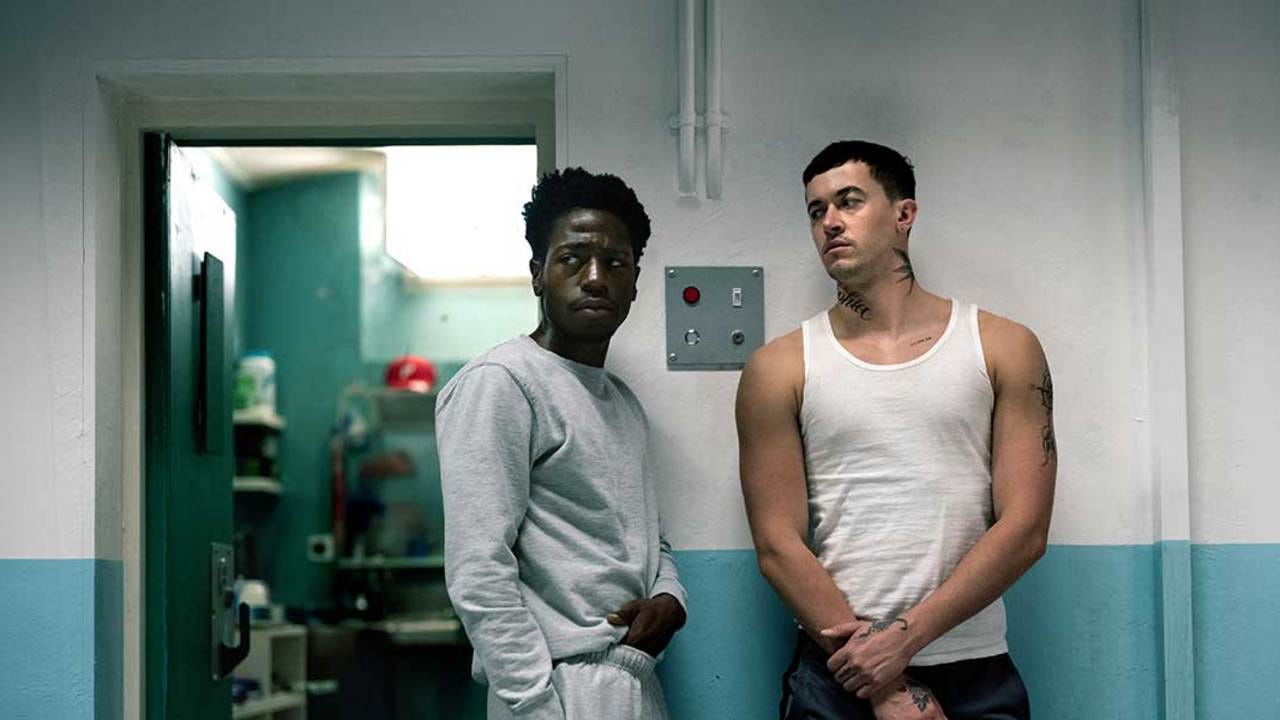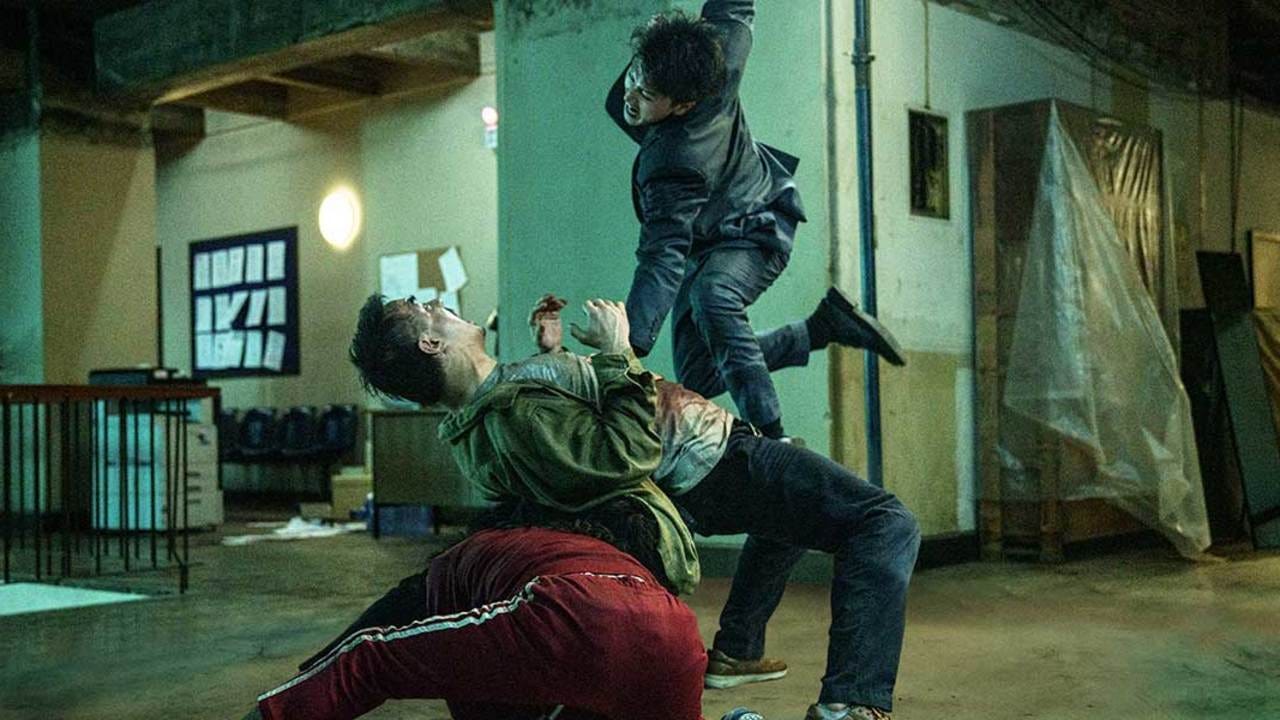TIFF '25 Day Eight
A few words about condescension
It’s time we had a conversation about TIFF’s pre-show this year. Long a source of mockery, around the festival this year, I’ve heard many people say that they wish we could go back to previous year’s pre-show ad rolls. Bring us that Buglari ad with Anne Hathaway and Zendaya! The pre-show at the 2025 fest is significantly less flashy, a sign of TIFF’s loss of fancy major financial backers, but it’s also disappointed in terms of actual content. In particular, the Rogers ads for the People’s Choice vote are atrocious, and the volunteer bumper is depressingly revealing.
First, those Rogers ads. One is set on a shoot for some kind of Hallmark Christmas movie, while the other takes place on a slasher movie set. In both cases, one of the actors obliviously defends the dreck they’re starring in, while the other expresses frustration, explaining that the festival audience wants subtlety, and nuance, and challenge, like in the work Catherine Breillat or Noah Baumbach—”What’s a Baumbach?” asks the fool, at the festival that failed to program the director’s latest. I hate these ads. Hate them. The ads aren’t funny, but worse than that is their condescension. They are condescending in the extreme, perpetuating the notion that there is some clear divide between art film’s and mindless entertainment. A silly idea in practice, considering the number of bad movies TIFF inevitably programs every year. Not even blaming them for that necessarily, considering any festival that shows 200 to 300 films per year will have plenty of duds, but still, where is the self-awareness?
The condescension and lack of self-awareness in the Rogers People’s Choice ads also reflect how out of their creators are with modern cinephilia. While many—maybe even most—in the audience do hold to the old heuristic of the movie and the “film,” talk to anyone a bit younger and more plugged in, and you’ll discover that not only is such a distinction rarer and rarer, there is in fact a celebration of a kind of quality trash. Whenever that slasher guy starts complaining about the cheesy clichés of the film he’s in, including how “stupid” it is to hide in the closet, my eyes roll right back into my skull. Never mind that the closet stuff in Halloween, the film this is parodying, is incredible, the fact that something’s become a cliché doesn’t mean it can’t work as part of your film, and the new generation of Letterboxd logging movie buffs tend to get this. There’s art in craft, and art in showing people a good time, and even art in leaning into the simple pleasures of genre when done right. Hell, there’s nothing wrong with enjoying a Hallmark Christmas movie. It’s not like anybody watching them thinks they’re quality cinema. They just scratch an itch. My mom loves them the same way I love Downton Abbey and The Morning Show, or how others love Vanderpump Rules.
“Let people like things,” is a played out plea, but there’s value in allowing people to form taste from a broad range of art. It’s a deeper, more exciting way to appreciate the art, and leads to amazing discoveries about the meaning of the word “good.” Tonight, Will Sloan will be hosting the Toronto launch of his new book, “Ed Wood: Made in Hollywood USA,” about the iconic “Worst Director of All Time,” alongside a screening of Wood’s now-classic Glen or Glenda, a patently terrible film in terms of pure craft that is nonetheless fun, entertaining, gripping, emotional, and a far more powerful film about the queer and trans experience than many such examples at TIFF over the years. Modern cinephilia has gotten us to a place where we can understand the truth of such an assessment, but the people behind those Rogers ads—and perhaps the people at TIFF who participated, if any did—have no concept of this, because they have no proximity to current film culture. A pretty terrible place to be for a major film festival.
At least the blame there can mostly be shouldered by Rogers, one of Canada’s worst companies. What to make, then, of the TIFF volunteer bumper? TIFFty! Less outright offensive, this short and admittedly cute enough little ad highlighting the contribution of TIFF hundreds of annual volunteers manages to reflect serious problems at the heart of the festival organization. In past years, for as cheesy as the volunteer bumper might have been, it was always very clearly celebratory of those fine free labourers. This year, though, with the focus on TIFF’s 50th year, the bumper actually becomes just another ad for TIFF, diverting attention from the volunteers starring in it, and finally reifying the notion that some vague idea of “celebrity” is what makes the festival tick. Celebrities are a fun part of TIFF, and it’s wonderful that TIFF has made it 50 years, but when the bumper ends, and the card comes up thanking the volunteers, only to disappear a couple seconds later, before most in the audience have realized it’s time to clap… That’s just disrespectful. And for what? To engage in crass self-promotion? I guess that really is the TIFF way in 2025. Dispiriting.
On Thursday, I started early once again, though not too early. I’d thought to attend a screening of Lucía Aleñar Iglesias’s film Forastera, which looks quite good, but 9 am was just too early. 9:30, though, wasn’t as daunting, so I made my way to the Scotiabank to check out Cal McMau’s debut feature, Wasteman, a prison drama starring David Jonsson and Tom Blyth. Jonsson, who is quickly emerging as one of the best actors of his generation, plays Taylor, a meek sort of guy who’s been in prison for 13 years on a manslaughter conviction, and is soon about to be released. All he wants is to get out and meet his son, who he last saw as a baby. In his last week locked up, Taylor gets a new cellmate, Blyth’s charming and erratic Dee, who, by dint of his own attempts to establish cred at his new home behind bars, ropes Taylor into events that would threaten his release, and his life. I realized watching Wasteman that I couldn’t think of a prison drama I haven’t enjoyed. There’s something about the location and the genre that just works every time at some base level. The fact that the characters are locked up together provides so much built-in tension, and that’s on top of dealing with complicated matters of morality, the law, and the justice system. (Fuck you, Roger’s People’s Choice ads!)
Wasteman is not necessarily the best the prison drama has ever had to offer, but that’s a high bar. Still, it’s a very good film. Deftly and humanely directed, and with two knockout performances at its centre. Blyth, who I really only knew from that last Hunger Games prequel, proves himself a great match for Jonsson. It’s like watching the process of two stars being born before your eyes. The film is tense and satisfying, and it intelligently builds its plot around more than just the usual genre trappings of prison gangs and a need to be free. There’s an economic component to it all, with the film delving into how economies of material goods and status within the prison hierarchy work themselves out, particularly in a system stretched to a breaking point, where violence is allowed to rule. If a bit sensationalized in its depiction, Wasteman nonetheless exposes the cruelty of a prison system that refuses to address the safety and wellbeing of the prisoners themselves. Great viewing in a theatre, I’ll admit, I particularly look forward to the film hitting streaming and finding an audience who just love to kick back and watch a good genre movie featuring great performances.
Continuing the theme of embracing the simple pleasures of genre, I decided to skip another art film in favour of some Hong Kong action. Kenji Tanigaki’s The Furious, is among this year’s Midnight Madness selections, and it’s a great Midnight Madness movie. I know this, because even at the midday P&I screening I attended, the audience was hooting and hollering and cheering throughout. It was like a midnight audience, right there in Scotia Cinema 5. Tanigaki, who was choreographer on the great Twilight of the Warriors: Walled In, brings an Indonesian style MMA brutality to the much more fun and spirited Hong Kong style, and it all meshes wonderfully. The story of two guys chasing down missing children kidnapped and trafficked by gangs, it’s largely an excuse for fun, funny, and appropriately bloody martial arts. I was especially taken with how much the choreography used gravity, and the way the performers use controlled falls as an offensive tactic. It gave every fight a comedic sensibility, which despite all the brutality, felt closer to an old Jackie Chan movie than I’ve seen from a martial arts movie in years.
I spent much of the rest of the day milling about. I took time to finish the draft of my final assignment during the festival, then mostly hung around, before finally joining the rush line for an evening screening of the new documentary Cover-Up, by Laura Poitras and Mark Obenhaus, about the legendary journalist Seymour Hersh. It’s a great documentary about a prickly, important figure. The guy who broke the My Lai massacre, among many other consequential stories about government and military malfeasance. It’s a carefully plotted film, taking the audience into the actual process of assembling a story like My Lai, though by the time it gets to the end, there’s a depressing realization: for all the exposure and truth-telling, things have only gotten worse and the truth is only harder to suss out. That was also the takeaway from the Q&A, which featured both directors, and Hersh himself. What a thing to be in the presence of a guy like Hersh, who bares real history on his shoulders. It was an excellent, engaging, funny Q&A, and after the film I got to briefly tell Poitras how meaningful her film All the Beauty and the Bloodshed is to me. What a fantastic way to end a day at the Toronto International Film Festival, which, for all my complaints about things like ads or the operations of the festival, always manages to be one of the great highlights of my year.




